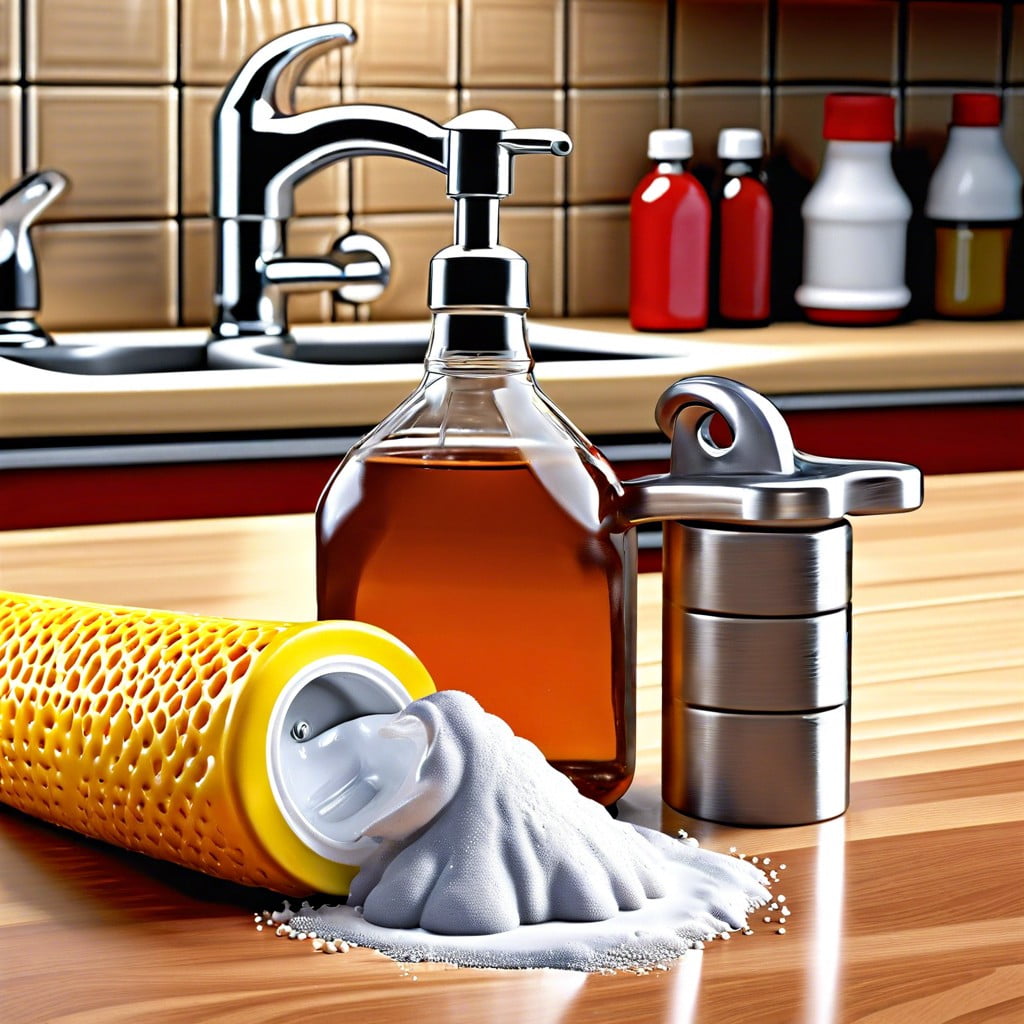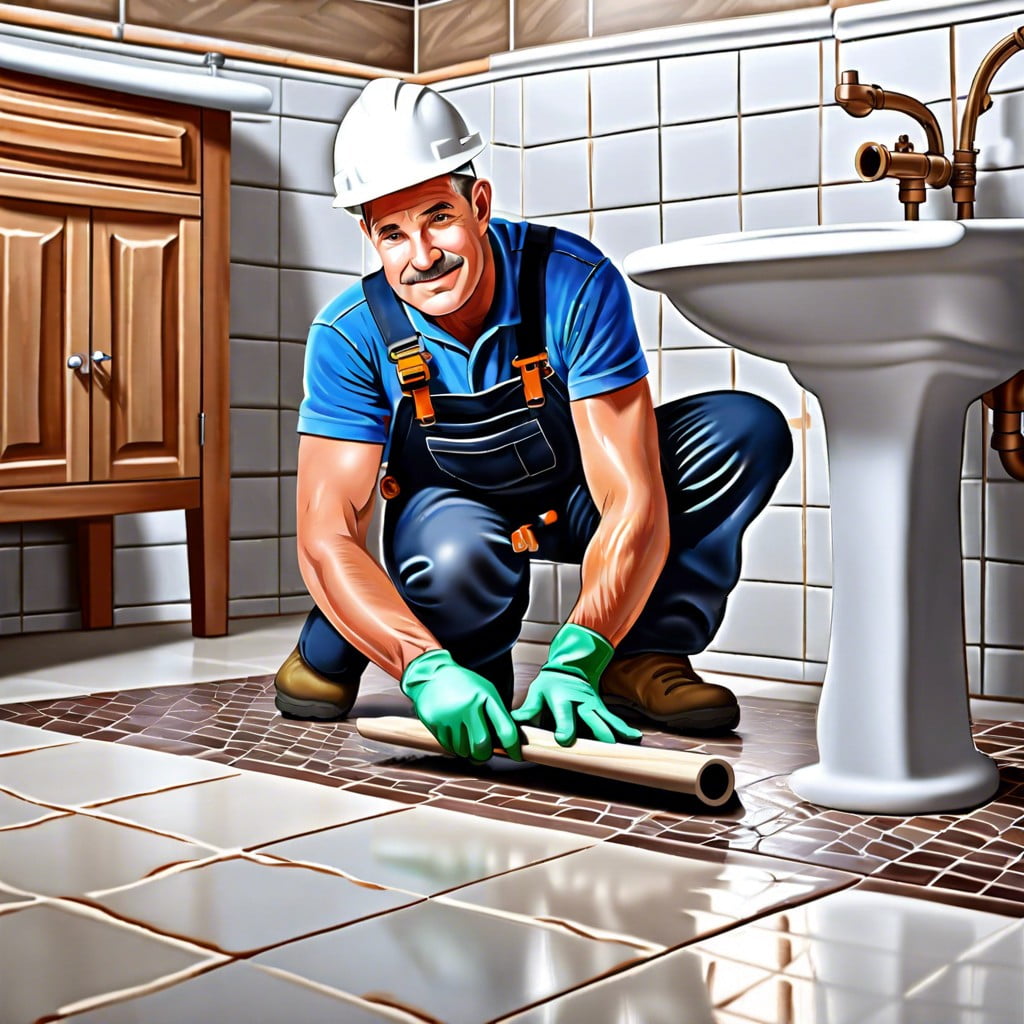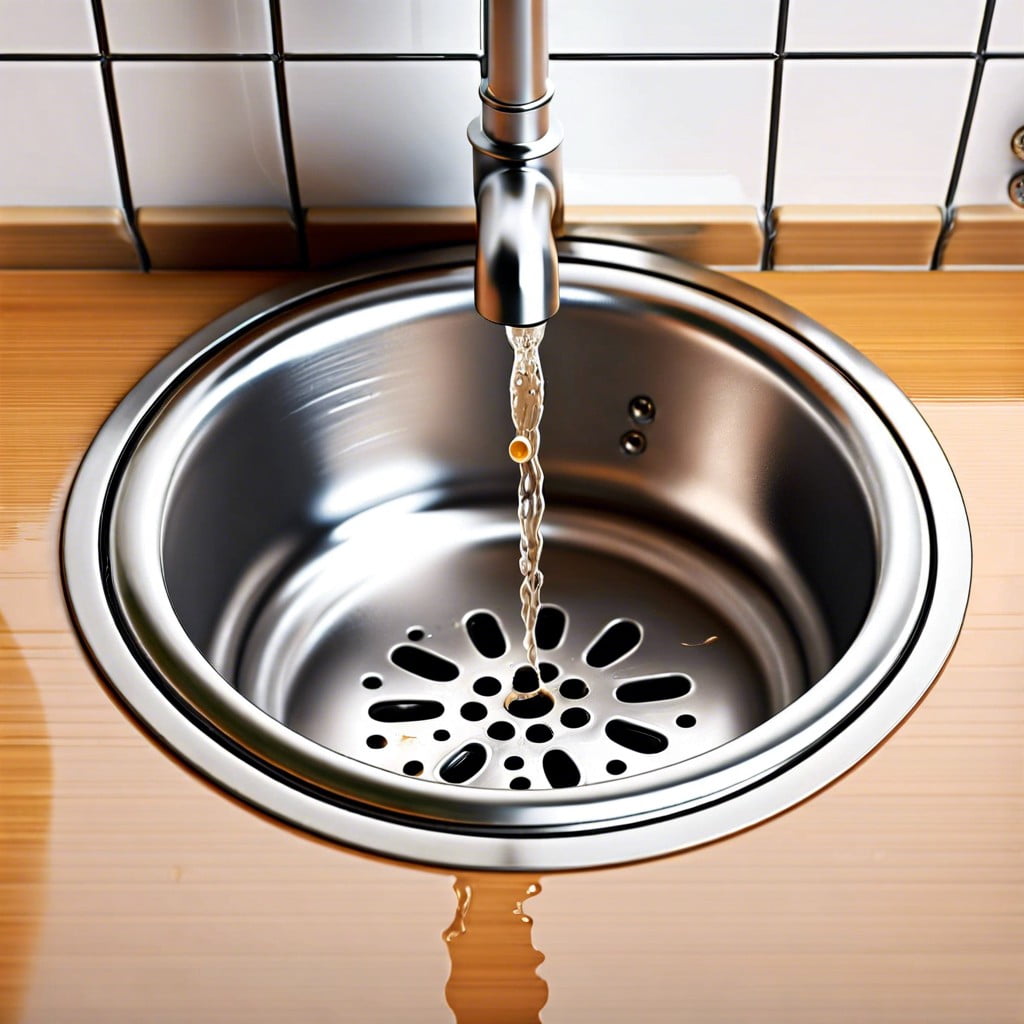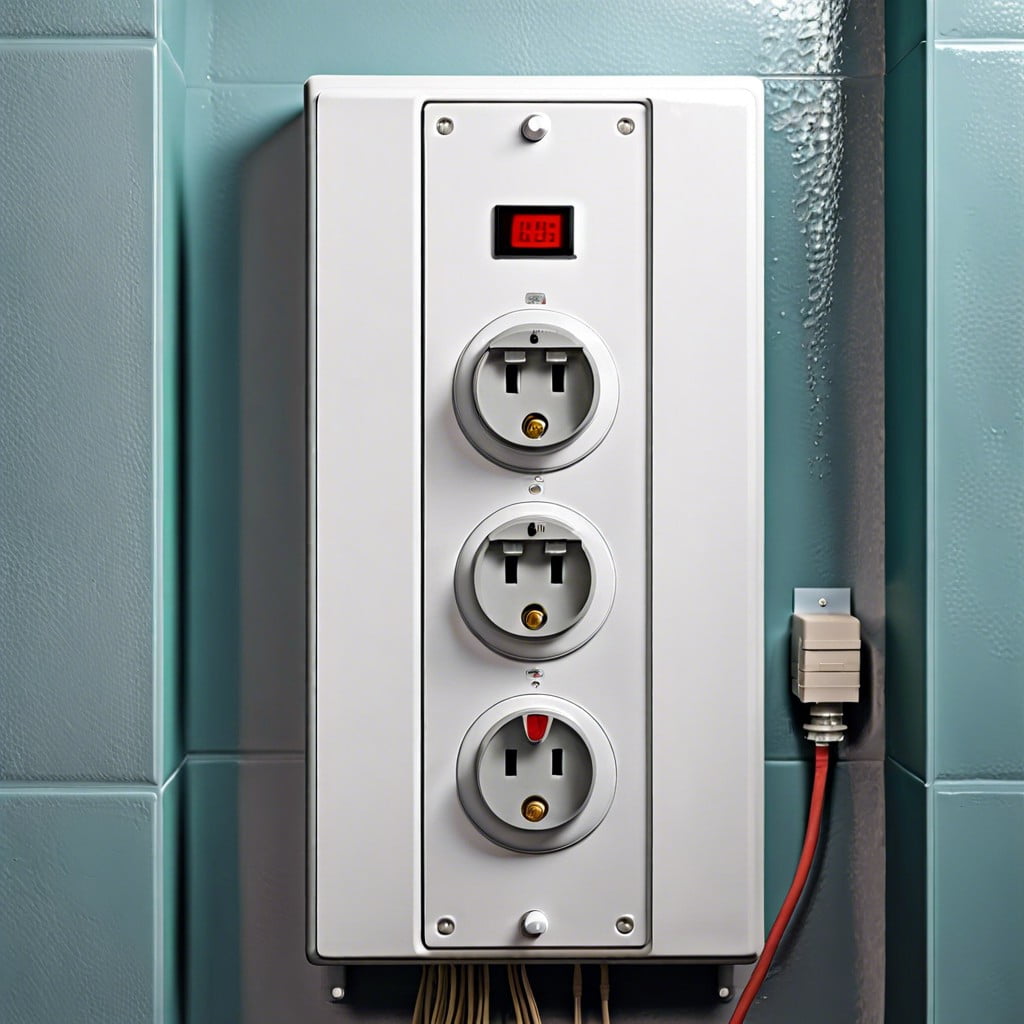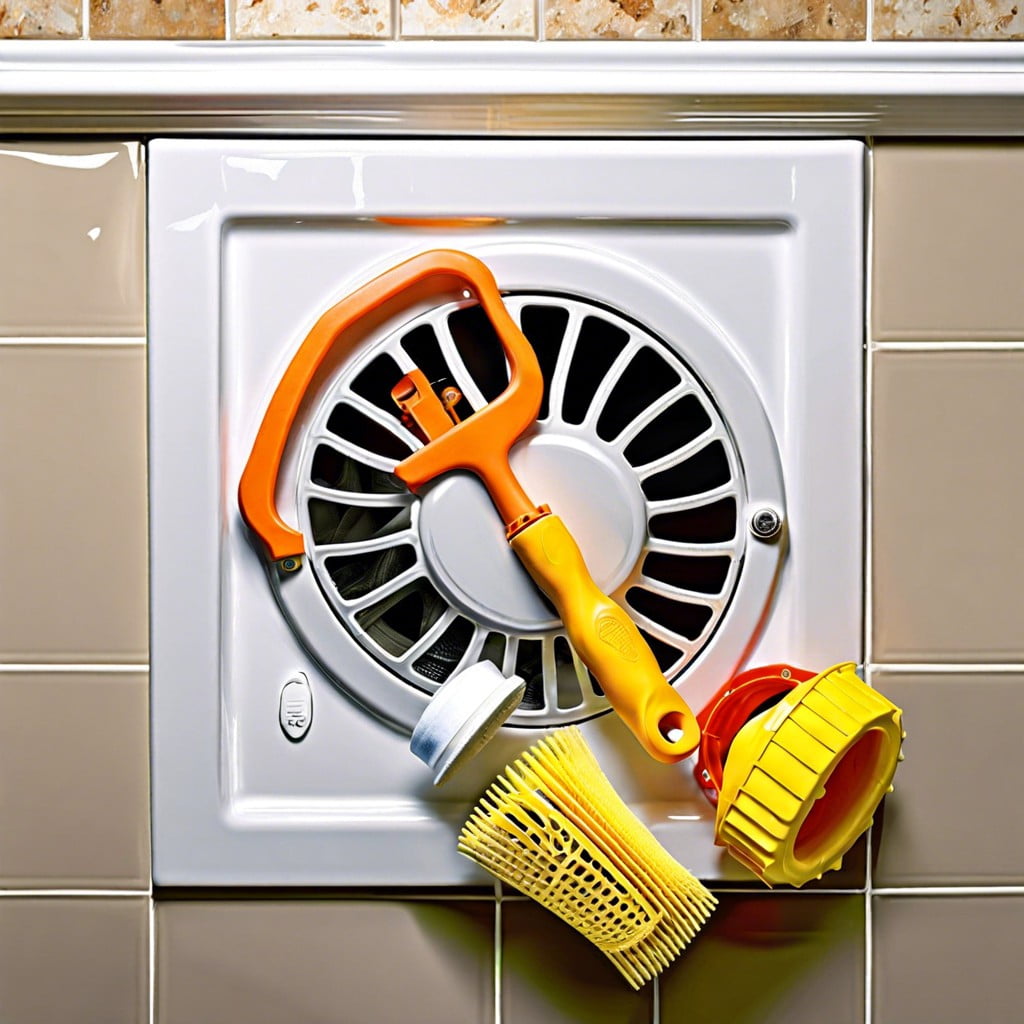Last updated on
Discover the elegance and health benefits of steam showers because this comprehensive guide will make selection and installation procedures crystal clear.
Key takeaways:
- Steam showers offer relaxation, respiratory relief, and skin health benefits.
- When hiring a contractor, check for experience, credentials, and clear communication.
- Choose materials like thick glass and mold-resistant grout for the shower enclosure.
- Regular maintenance, ideal settings, and ventilation are important for optimal performance.
- Consider the cost of installation, labor, generator, additional features, and materials.
Benefits of a Steam Shower

A steam shower isn’t just a luxurious addition to your home; it comes with an array of health and wellness benefits. The warm mist soothes your nerves, offering a tranquil retreat from the daily hustle.
Beyond relaxation, it can also open up your pores, enhancing skin health and giving it a youthful glow. For those who exercise regularly, the steam aids in muscle recovery by increasing circulation and reducing soreness.
Additionally, it can provide respiratory relief, as the steam helps to clear sinuses and bronchial passages. Last but not least, a daily steam session can be an effective way to manage stress, thanks to its natural calming effect on the body and mind.
How to Hire a Contractor for Steam Shower Installation
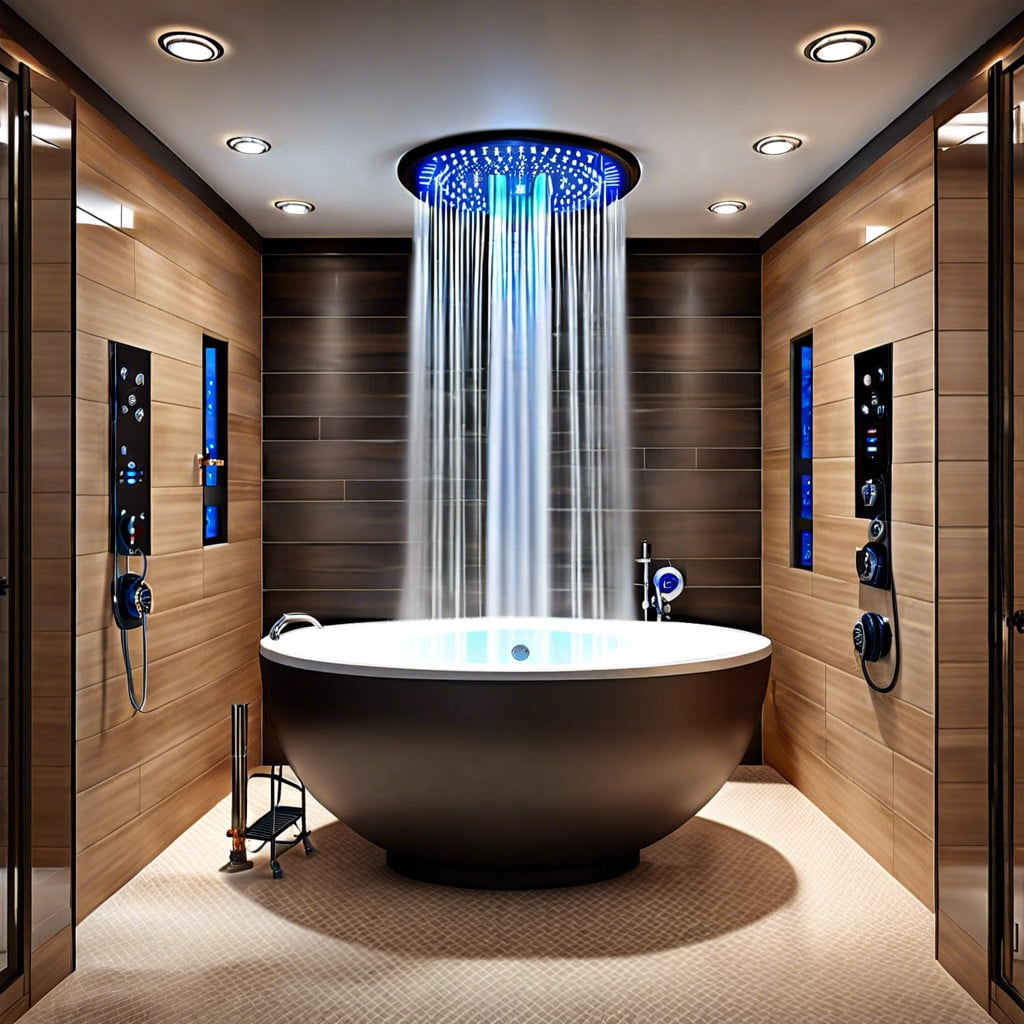
When selecting a contractor, prioritize those with specific experience in steam shower installations. Ask for their portfolio and references to assess the quality of their past projects. Ensure they have a solid understanding of the complexities of steam shower systems, including vapor proofing, electrical components, and plumbing requirements.
Verify their credentials, such as licensing and insurance, to protect yourself from any liability. A licensed contractor will adhere to local building codes and regulations, which is crucial for both safety and compliance.
Inquire about the timeline for completion and the warranty provided for the work performed. A reliable contractor will offer a guarantee on both materials and labor.
Communicate clearly about your vision for the steam shower, and make sure the contractor provides a detailed written estimate. This should include a breakdown of all costs associated with the project.
Lastly, don’t hesitate to ask questions. A professional installer should be able to address all inquiries and concerns you may have, ensuring your peace of mind throughout the installation process.
Choosing Plumbing and Electrical Contractors for Your Steam Shower
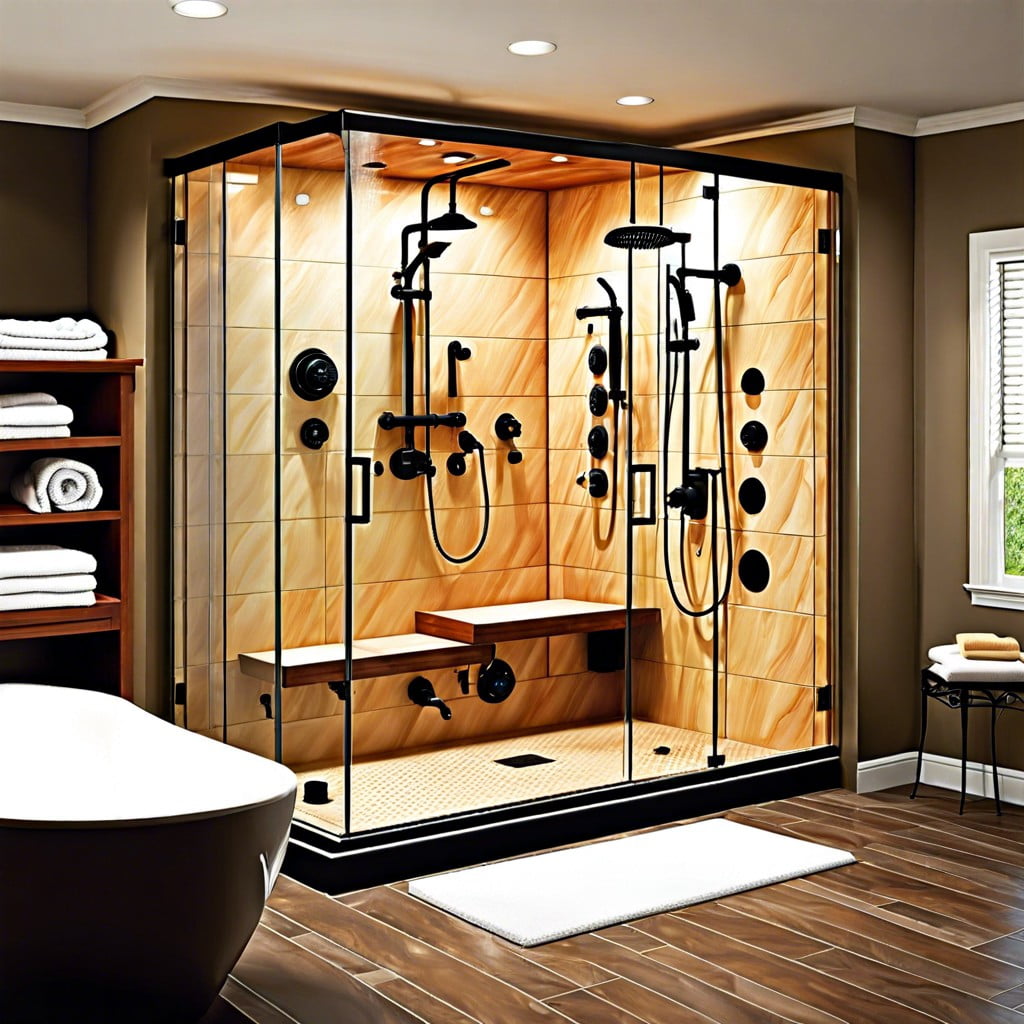
When selecting contractors for your steam shower project, prioritize licensed professionals with steam shower experience. Confirm their understanding of both plumbing complexities and electrical requirements specific to steam showers, which differ from those of standard showers.
Ask for references or portfolio examples of similar installations they’ve completed. Verify that they carry insurance to protect against potential job-related damages. Ensure they’re aware of, and adhere to, local building codes and regulations, which can significantly affect the installation process.
Discuss with them their familiarity with steam shower kits and components you’ve chosen, or seek their expert recommendations. Remember, a skilled contractor should be able to articulate a clear plan, from the installation of the steam generator to the final electrical connections, ensuring a steam shower that is safe, efficient, and up to industry standards.
Selection of Materials for Your Shower Enclosure
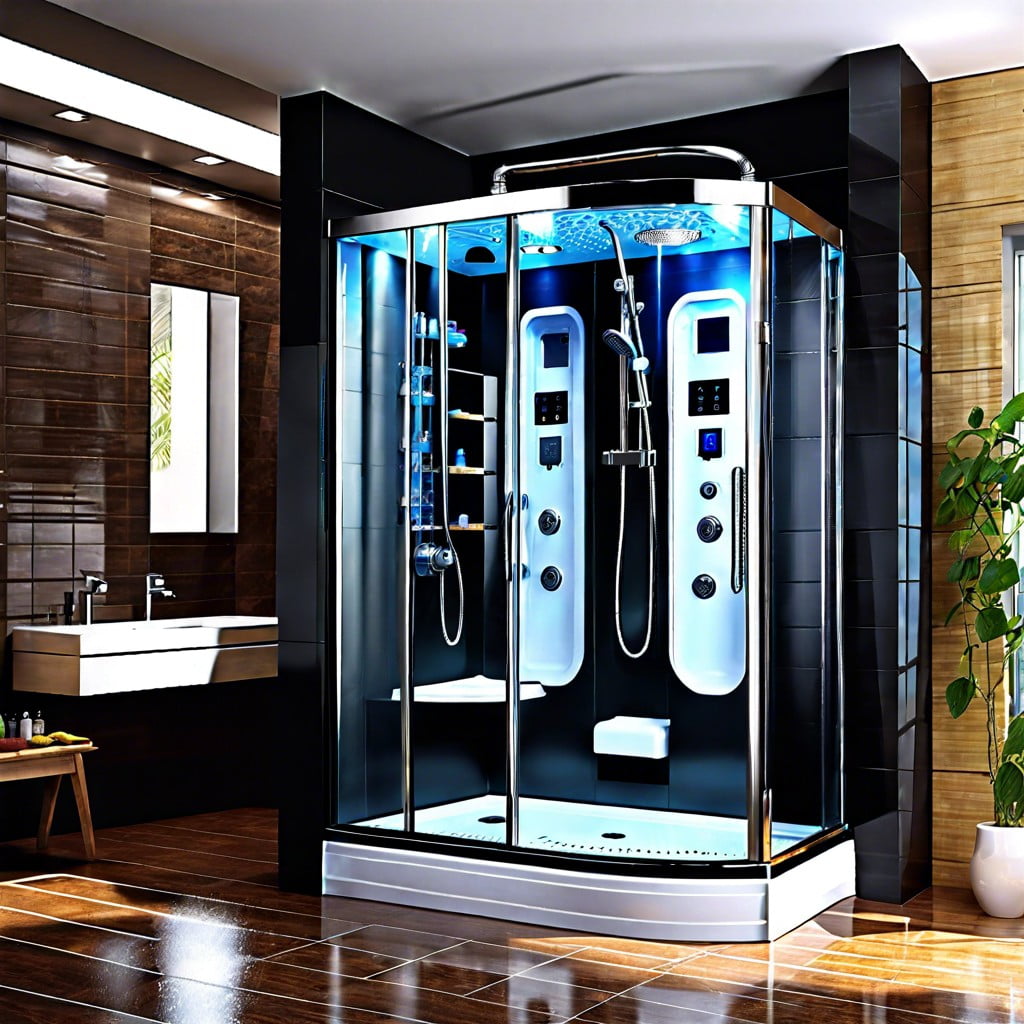
Choosing the right materials for your shower enclosure is vital to ensure longevity and optimal steam production. Opt for glass that’s at least 3/8″ to 1/2″ thick–this thickness helps to contain steam and withstand temperature stresses.
Ceramic or porcelain tiles are recommended for their durability and ease of cleaning, but avoid porous stone tiles as they can absorb moisture.
Use mold-resistant grout to prevent moisture seepage between tiles. Ceiling material should have a slight slope to discourage condensation drips, and for efficient heat reflection, consider acrylic or fiberglass.
Lastly, ceiling height shouldn’t exceed 8 feet to maintain the steam effect. Select materials that are not only stylish but also functional to create the perfect steam shower retreat.
Post-Installation Considerations for Your Steam Shower
Once your steam shower is installed, there are a few key things to keep in mind for optimal performance and enjoyment:
– Regular Maintenance: To prevent mold and mildew, clean the shower after each use and leave the door ajar to dry out. Periodically inspect steam outlets and drains for blockages. – Ideal Settings: Get familiar with the steam generator’s control panel. Find your preferred temperature and timer settings for the best experience. – Ventilation: Ensure your bathroom is well-ventilated to handle the increased moisture from the steam. This may require an upgraded exhaust fan or additional dehumidifying measures. – Water Quality: Consider using a water softener if you live in a hard water area to avoid mineral buildup in the steam generator and other components. – Safety Precautions: Keep an eye on the seals and electrical components. They should always be in top condition to avoid leaks or electrical issues. – Professional Check-ups: Have a professional service your steam shower periodically to ensure all the technical aspects, such as the steam generator and plumbing, are in good working order.Steam Shower Installation Cost Guide
Navigating the financial aspects of installing a steam shower is key to a successful project. Given that the cost varies depending on size, features, and materials, here’s a breakdown to help you manage your budget:
1. Unit Type & Size: A basic prefab steam shower unit might start around $2,500, while custom designs can exceed $10,000. Larger setups naturally cost more.
2. Labor Expenses: On average, labor charges range from $1,000 to $6,000. This includes installation of the steam generator, plumbing, electrical work, and finishing.
3. Generator Pricing: The core of a steam shower is the generator, which typically costs between $500 and $3,500. Higher capacity generators for larger showers will be at the upper end of this range.
4. Additional Features: Extras like aromatherapy, mood lighting, or Bluetooth speakers will add to the overall cost.
5. Materials Quality: The choice of materials, like tile versus marble, will significantly affect cost. Opting for high-end finishes can almost double the price.
6. Prep Work: If adjustments to existing plumbing or electrical systems are needed, this will increase your costs accordingly.
Keep in mind that these numbers are estimates and will fluctuate based on your specific situation and location. It’s advisable to get multiple quotes from professionals to find the best deal that doesn’t sacrifice quality.
Cost Analysis By Steam Shower Type and Material
When considering the type and material of a steam shower, your budget will naturally be affected. Here’s a breakdown to guide your decision-making:
- Prefab units: Priced for convenience and efficiency, prefabricated steam showers are a go-to. They can range anywhere from $1,000 to $5,000, not including installation, with acrylic being a common, cost-effective material.
- Custom steam showers: If you’re opting for a custom build, costs can climb significantly. Tiling, glass thickness, and the choice between ceramic, porcelain, or natural stone play substantial roles in determining the price, which can vary from $2,500 to $10,000 or more before installation.
- Glass enclosures: Tempered glass is a popular choice for its durability and sleek look. The thickness of the glass and coatings for water spots or mold resistance will influence the final cost.
- Size matters: Larger steam showers require more materials and a heftier steam generator, bumping up the expense.
Remember, high-quality materials may have a larger upfront cost but can offer better longevity, which could save money in the long run due to reduced maintenance and repair needs.
Labor Costs to Install a Steam Shower
Navigating labor costs can help align your budget with your vision for a luxury steam shower. The labor component is a significant part of your overall expenses and varies depending on several variables:
- Geographic Location: Labor costs tend to be higher in urban areas compared to rural ones due to the higher cost of living.
- Complexity of Installation: Rooms that require extensive waterproofing, electrical work, or custom-built features may demand more labor hours.
- Experience of Installers: Seasoned professionals often charge more, but their expertise can ensure a high-quality installation and potentially save you money on repairs or adjustments in the long run.
Expect labor to account for around half of the total installation cost. Don’t shy away from asking for detailed quotes that break down expenses. Investing in skilled labor is crucial for the safe and effective operation of your steam shower, contributing to its longevity and your ultimate satisfaction.
Cost to Convert a Regular Shower to a Steam Shower
Converting an existing shower into a steam shower is often more affordable than a full installation from scratch. Here’s a breakdown of what this conversion might entail:
1. Airtight Sealing: Steam requires a completely sealed space. Additional sealing may be needed to prevent steam from escaping.
2. Steam Generator: Purchasing a steam generator compatible with the size of your shower is essential. Costs vary based on generator size and features.
3. Electrical Work: A certified electrician must ensure that the generator connects safely to your home’s electrical system.
4. Plumbing Adjustments: A plumber might need to install a new tile or reconfigure existing plumbing to accommodate the generator and steam delivery.
5. Control Panel: Installing a control panel inside the shower for temperature and timing adds to the cost but is necessary for functionality.
6. Bench or Seat: Adding a place to sit enhances the steam experience and can be done with waterproof materials.
Remember, these are general pointers. An exact quote will depend on the specific dimensions and current state of your shower, as well as local labor rates.
Steam Generator Pricing
When budgeting for your steam shower, the steam generator will be a significant component of the total cost. Here’s a breakdown:
- Capacity and Size: The price increases with the unit’s size, which should correspond to your shower’s cubic footage.
- Power Consumption: Generators with higher kW ratings may be more expensive upfront but provide a more powerful steam flow.
- Brand and Quality: Popular brands may offer generators at a premium, but often come with better warranties and customer service.
- Features: Models with advanced features like digital controls, aromatherapy options, or built-in speakers will cost more than basic units.
- Energy Efficiency: Energy-efficient models could save on long-term operational costs, even if the initial purchase is pricier.
Remember, it’s not just about picking the cheapest option; it’s about finding a generator that balances cost with performance and longevity for your steam shower experience.
Maintenance of Your Steam Shower
Regular upkeep is key to ensuring longevity and optimal performance. Aim to wipe down the interior surfaces after each use to prevent mineral buildup from the steam.
Monthly deep cleaning with a non-abrasive cleaner designated for your shower material will help maintain its sparkle and sanitize the space.
Pay attention to the steam generator too; it should be flushed every few months to expel any accumulated sediment.
Filter replacements will vary depending on water quality and usage—consult your manufacturer’s guide for specific timelines.
Check seals and door sweeps periodically, as these can wear and lead to steam leaks.
Lastly, be vigilant about ventilation and keep an eye out for mold or mildew, addressing any issues promptly to preserve the healthful benefits and comfort of your steam oasis.
Pros and Cons of a Steam Shower
Discover the array of benefits steam showers offer:
- Relaxation: The soothing warmth envelops you, reducing stress and promoting muscle relaxation.
- Respiratory Relief: Steam can open airways, improving breathing for those with respiratory issues.
- Skin Health: The moisture hydrates your skin, leaving it soft and cleansed.
However, it’s important to consider potential drawbacks:
- Installation Cost: Higher initial investment than a standard shower due to specialized equipment.
- Space Requirements: A larger bathroom might be necessary to accommodate additional components.
- Maintenance: Regular cleaning and possible calcium buildup need to be managed to maintain functionality.
Balancing these aspects will help determine whether a steam shower fits into your lifestyle and bathroom space.
Steam Shower Installation Checklist
Before your steam shower installation begins, tick off these essentials to ensure a seamless process:
- Verify measurements of the shower space to accommodate the steam shower unit.
- Ensure your bathroom’s ventilation system is adequate for the added humidity.
- Choose a steam generator that matches the cubic footage of your shower.
- Confirm that your electrical system can handle the additional load.
- Install a vapor barrier and waterproof materials to prevent moisture damage.
- Determine the location of the steam shower controls for easy access.
- Explore options for seating in your steam shower for enhanced comfort.
- Decide on the type of door that will seal in steam effectively.
- Plan for the installation of a sloped ceiling to prevent condensation drips.
- Consider the placement of essential oils or aromatherapy dispensers for a spa-like experience.
Finding a Qualified Installer
To ensure your steam shower is installed correctly, look for a certified plumber with a track record of installing steam showers. You’ll want someone who is familiar with both the plumbing and electrical aspects unique to these units.
Check online reviews and ask for referrals from friends or family. Verifying credentials and insurance is crucial; a reputable installer should have no issue providing this information.
Finally, request quotes from multiple installers to compare rates and service offerings before making your decision. It’s important that the installer understands local building codes to ensure compliance and safety.
Preparatory Work for Installation
Before the arrival of the installation crew, ensure the bathroom space is ready to facilitate the process:
1. Clear the area: Remove any bathroom fixtures, furniture, or obstructions that might hinder the installers’ access to the shower space.
2. Assess the floor: Verify that the floor is level and capable of supporting the weight of a steam shower, which may be heavier than a standard shower due to additional components.
3. Check the walls: Walls should be prepared for moisture resistance. If not already water-resistant, consider applying a vapor barrier or water-resistant backer board as recommended by the installer.
4. Electrical and plumbing access: Ensure an easy approach to electrical connections and plumbing is available – this may require removing a portion of the bathroom wall or floor covering.
5. Ventilation: Consider the steam shower’s need for an exhaust fan to prevent excess moisture buildup in the bathroom.
Addressing these factors in advance can streamline the installation process, allowing for a more efficient and cost-effective project completion.
Installation of Tray/Tub and Panels
Once the foundation for your steam shower is in place, focus shifts to properly installing the tray or tub and panels. Ensure the tray is level, as an uneven base can lead to improper drainage and potential water damage. The panels must be securely attached to the walls to prevent steam from escaping. Use waterproof materials and sealants designed for high moisture environments to avoid mold and structural damage. Additionally, confirm that the panel materials can withstand the consistent temperature fluctuations of a steam shower. Remember to allow access panels for future maintenance of steam generators and plumbing.
Connection of Pipes, Wires, Water, and Drainage
Ensuring that the steam shower’s plumbing and electrical framework are installed correctly is vital for safety and function. Your installer should adhere to local building codes while connecting:
1. Water Supply: High-quality, flexible supply lines are recommended for trouble-free installation and future access. Isolating valves should be installed to control the water flow precisely.
2. Drainage: The drain should be sufficiently sized to handle the condensation without overflow. It must have a trap to prevent backflow of sewer gases.
3. Pipes: Copper piping is a durable choice, offering resistance to the high temperatures present in steam showers. However, some modern materials like PEX are also suitable and may offer easier installation and cost benefits.
4. Electrical Wires: A dedicated GFCI-protected circuit is crucial for powering the steam generator and any digital controls. Proper grounding and secure connections reduce the risk of electrical hazards.
5. Steam Generator: It should be connected to both the water supply and drainage. The correct placement of the generator, ideally within 25 feet of the steam shower, will affect efficiency and performance.
Remember, your contractor should double-check connections for leaks and proper insulation, ensuring a safe and enduring steam shower experience.
Application of Sealant
Ensuring your steam shower remains watertight is crucial. Here’s how to apply sealant correctly:
1. Choose the Right Sealant: Opt for a silicone-based sealant that’s designed specifically for bathrooms and high-moisture areas.
2. Clean Surfaces Thoroughly: Before applying the sealant, clean all areas of debris. Allow them to dry completely to ensure good adhesion.
3. Apply Masking Tape: For precise application, place masking tape on either side of the joints, leaving the exact space where the sealant is to be applied.
4. Cut The Sealant Nozzle at an Angle: Trim the nozzle of the sealant tube at a 45-degree angle. This allows for a smooth and consistent application.
5. Smooth the Sealant: After applying the sealant to the joints, smooth it down with a damp fingertip or a sealant smoothing tool. This helps to create a seamless seal.
6. Let It Dry: Refer to the manufacturer’s instructions on how long to wait before using the shower. Typically, it may take up to 24 hours to fully cure.
Steam Shower Add-Ons
Enhance your steam shower experience with a myriad of add-ons designed to provide a spa-like ambience. Consider these popular options:
- Aromatherapy Systems: Infuse the steam with essential oils for therapeutic benefits and pleasant aromas.
- Chromatherapy Lights: Mood-enhancing LED lights change colors, offering a visual form of relaxation and energy balance.
- Sound Systems: Built-in speakers allow you to play calming tunes or your favorite podcasts directly in the shower.
- Digital Controls: Upgrade to a digital interface for precise temperature and steam control at the touch of a button.
- Shower Seats: Folding seats are a practical addition, providing comfort during extended steam sessions.
- Body Jets: Install multiple jets for a full-body massage that complements the steam’s soothing effects.
Remember, each of these features may vary in installation complexity and cost, so prioritize based on your desires and budget.
Comparison of Steam Shower Cost Against Regular Shower
When weighing the expenses between a steam shower and a regular shower, consider the following:
1. Initial Installation: The upfront cost for a steam shower is significantly higher due to the need for a steam generator and the watertight enclosure.
2. Fixture Costs: Regular showers typically require a simpler set of fixtures compared to steam showers, which often have digital controls, seating, and special doors.
3. Energy Usage: Steam showers generally consume more electricity to power the generator, but the difference in water usage may offset this as they use less water per session than a traditional shower.
4. Long-term Value: Investing in a steam shower can potentially increase your home’s value and attractiveness to future buyers who appreciate the luxury feature.
5. Health Benefits: The therapeutic benefits of steam may lead to fewer trips to the spa, saving money over time.
Remember that while the initial payout for a steam shower is greater, the luxury and potential long-term savings in water and wellness can make it a worthy investment.
FAQ
How much does it cost to install a steam shower?
The cost of installing a steam shower typically ranges from $2,800 to $7,100, but custom designs and luxury models may cost up to $25,000.
Do plumbers install steam showers?
Yes, qualified and licensed plumbers are the appropriate professionals to install steam showers.
Who can install steam shower?
Installing a steam shower requires a professional who sells steam shower generators, a tiling contractor, and a shower-door installer to build a steam-proof enclosure.
Who puts in steam showers?
A licensed plumber is responsible for installing steam showers, making all necessary water connections.
What factors influence the cost of a steam shower installation?
The cost of a steam shower installation is influenced by factors such as the type of steam shower unit, the complexity of installation, necessary plumbing or electrical upgrades, labor rates, and potentially required structural modifications.
Can a DIY enthusiast install a steam shower?
Yes, a DIY enthusiast can install a steam shower, but it requires thorough understanding of plumbing and electrical systems.
What are the specific qualifications needed by professionals to install a steam shower?
Professionals installing a steam shower should possess specific qualifications such as plumbing certification, electrical licensing, and experience in steam unit installation.
Recap
